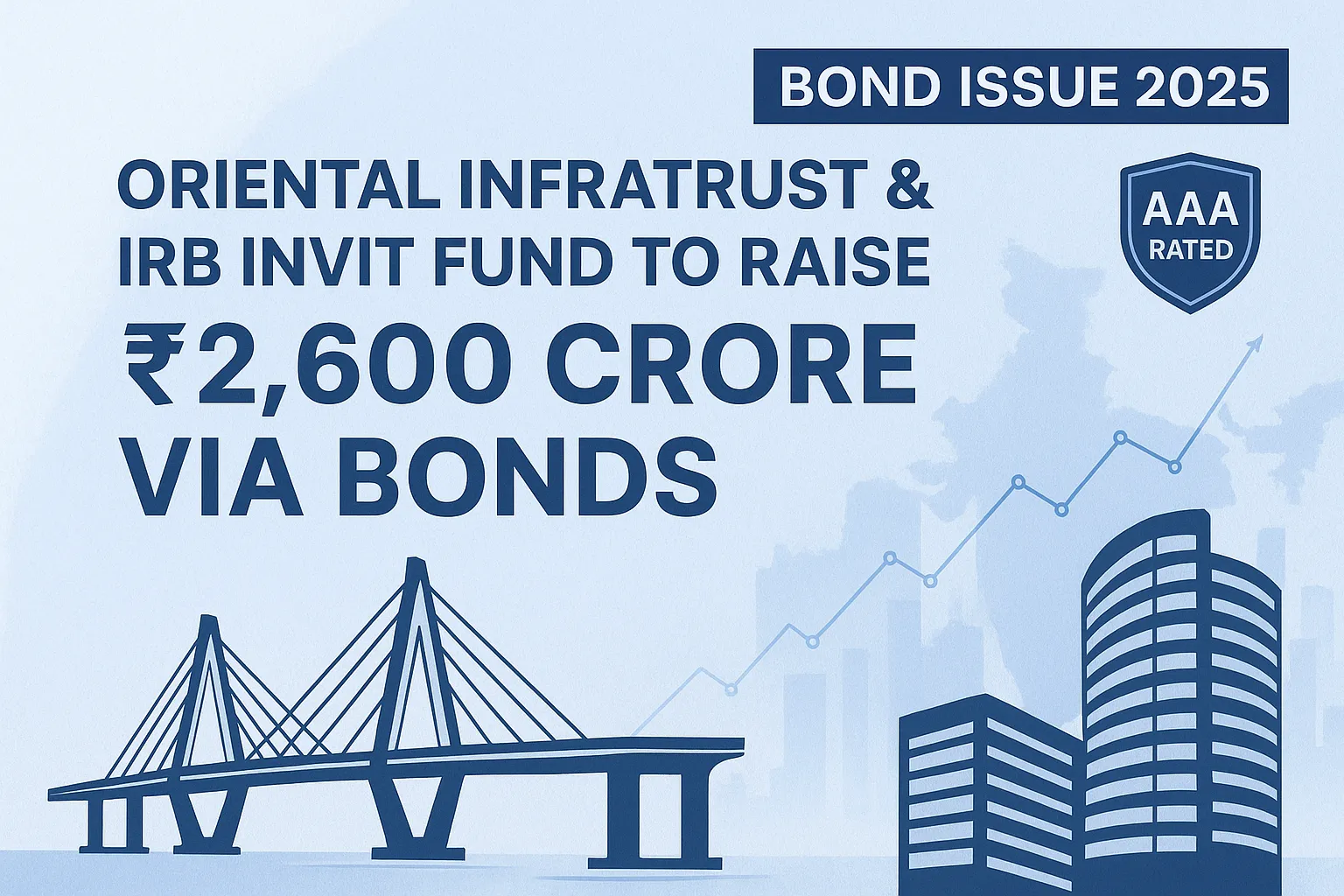
India’s infrastructure investment trust (InvIT) sector is gearing up for a major fundraising push. Oriental Infratrust and IRB InvIT Fund are preparing to raise a combined total of over ₹2,600 crore through bond issues in the coming weeks.
The move marks a significant step for both trusts as they look to diversify funding sources beyond traditional equity and bank loans.
Oriental Infratrust plans first bond issue
Oriental Infratrust aims to raise around ₹830 crore by issuing bonds with 3-year and 14-year maturities. The instruments are expected to receive a AAA credit rating, indicating high safety and minimal default risk.
The proceeds will primarily be used to refinance existing loans and support ongoing road and infrastructure projects.
IRB InvIT Fund to raise ₹1,800 crore through 5- and 10-year bonds
IRB InvIT Fund, one of India’s largest infrastructure trusts, plans to raise about ₹1,800 crore via bonds with 5-year and 10-year tenures.
According to bankers, the move reflects growing confidence among investors in InvITs as stable, income-generating instruments linked to operational infrastructure assets.
Why InvITs are turning to the bond market
Several structural factors are driving this shift:
- Increasing capital needs for India’s expanding infrastructure network.
- Rising interest rates and tighter bank lending conditions.
- Growing investor appetite for steady, fixed-income opportunities.
Bond issuances allow InvITs to access long-term funds at competitive rates while offering investors predictable returns backed by cash-flow-generating assets.
How safe are AAA-rated InvIT bonds?
While a AAA rating signals strong repayment capacity, experts caution that investors should still assess key aspects such as:
- The stability of project cash flows and toll revenues.
- Prepayment or call clauses in the bond structure.
- Liquidity and tradability in the secondary market.
Credit ratings offer a broad risk view, but a detailed project and financial review remains essential.
InvIT sector growing rapidly
India currently has around 27 registered InvITs, with total assets under management (AUM) exceeding ₹7 trillion.
The sector’s market capitalization has crossed ₹2.4 trillion, underscoring its rising importance in long-term infrastructure financing. Over the past two years, InvITs have increasingly used both equity and debt markets to fund expansion.
State-level InvITs: a new frontier
Several state governments are exploring InvIT structures to monetize public infrastructure assets such as highways, toll roads, and terminals.
This approach provides upfront funding for new projects while attracting institutional investors seeking stable, long-term returns.
Opportunities for investors
Retail investors may view AAA-rated InvIT bonds as a relatively safe investment, provided they evaluate coupon rates, tax implications, and liquidity conditions.
Institutional investors, meanwhile, can leverage these bonds for predictable cash flow, though due diligence on project viability and debt structure is crucial.
Outcome
The planned bond issues by Oriental Infratrust and IRB InvIT Fund highlight how India’s infrastructure financing landscape is evolving.
By tapping the bond market, InvITs are moving toward more diversified, market-driven funding models — a trend that not only benefits investors but also strengthens India’s long-term infrastructure growth momentum.
Sources: Orientalinfratrust, IRBInvit, SEBI InvIT Data (October 2025)


































































